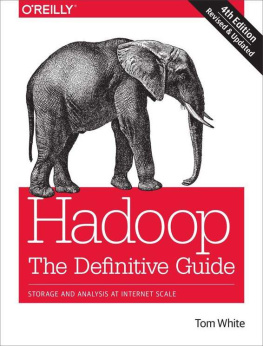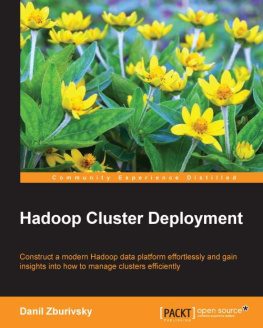John Russell - Getting Started with Impala: Interactive SQL for Apache Hadoop
Here you can read online John Russell - Getting Started with Impala: Interactive SQL for Apache Hadoop full text of the book (entire story) in english for free. Download pdf and epub, get meaning, cover and reviews about this ebook. year: 2014, publisher: OReilly Media, genre: Home and family. Description of the work, (preface) as well as reviews are available. Best literature library LitArk.com created for fans of good reading and offers a wide selection of genres:
Romance novel
Science fiction
Adventure
Detective
Science
History
Home and family
Prose
Art
Politics
Computer
Non-fiction
Religion
Business
Children
Humor
Choose a favorite category and find really read worthwhile books. Enjoy immersion in the world of imagination, feel the emotions of the characters or learn something new for yourself, make an fascinating discovery.
- Book:Getting Started with Impala: Interactive SQL for Apache Hadoop
- Author:
- Publisher:OReilly Media
- Genre:
- Year:2014
- Rating:5 / 5
- Favourites:Add to favourites
- Your mark:
Getting Started with Impala: Interactive SQL for Apache Hadoop: summary, description and annotation
We offer to read an annotation, description, summary or preface (depends on what the author of the book "Getting Started with Impala: Interactive SQL for Apache Hadoop" wrote himself). If you haven't found the necessary information about the book — write in the comments, we will try to find it.
Learn how to write, tune, and port SQL queries and other statements for a Big Data environment, using Impalathe massively parallel processing SQL query engine for Apache Hadoop. The best practices in this practical guide help you design database schemas that not only interoperate with other Hadoop components, and are convenient for administers to manage and monitor, but also accommodate future expansion in data size and evolution of software capabilities.
Ideal for database developers and business analysts, Getting Started with Impala includes advice from Clouderas development team, as well as insights from its consulting engagements with customers.
- Learn how Impala integrates with a wide range of Hadoop components
- Attain high performance and scalability for huge data sets on production clusters
- Explore common developer tasks, such as porting code to Impala and optimizing performance
- Use tutorials for working with billion-row tables, date- and time-based values, and other techniques
- Learn how to transition from rigid schemas to a flexible model that evolves as needs change
- Take a deep dive into joins and the roles of statistics
John Russell: author's other books
Who wrote Getting Started with Impala: Interactive SQL for Apache Hadoop? Find out the surname, the name of the author of the book and a list of all author's works by series.














